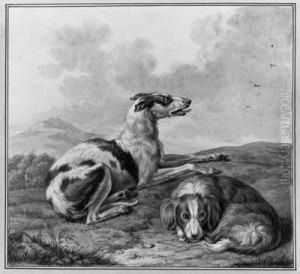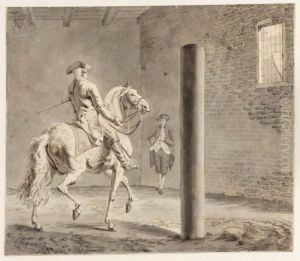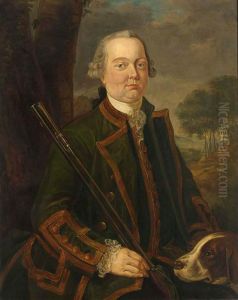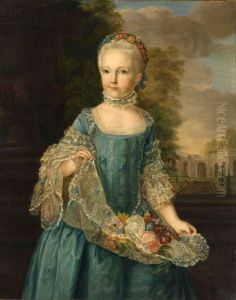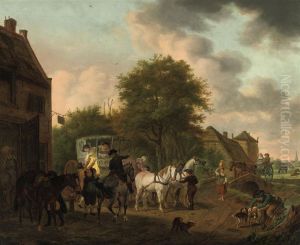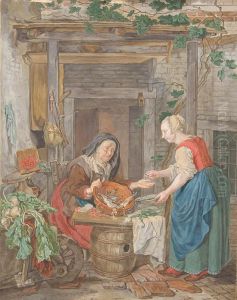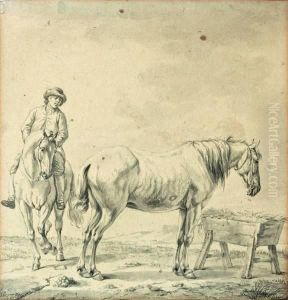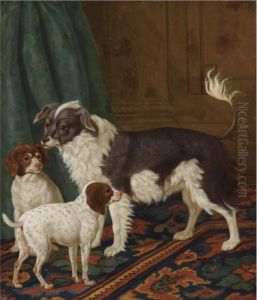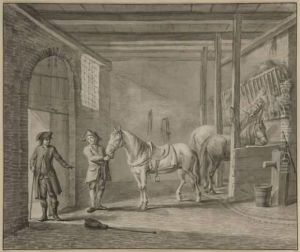Tethart Philip Christiaan Haag Paintings
Tethart Philip Christiaan Haag was a Dutch artist and art restorer born in 1756 in the city of The Hague, Netherlands. His contributions to the art world during the late 18th and early 19th centuries, particularly in the realm of art restoration, were significant during a period that bridged the Baroque and Romantic eras. Haag's work and expertise were especially notable in a time when the appreciation of art and historical artifacts was gaining prominence, and the need for skilled restoration techniques was becoming ever more apparent.
Haag's career is distinguished not only by his restoration work but also by his talents as a court painter. In 1806, he was appointed as the court painter to Louis Bonaparte, who was then the King of Holland. This prestigious position allowed him to work closely with some of the most important artworks and artifacts of his time, offering him a unique perspective on art conservation and the challenges it faced. His role required a delicate balance between artistic integrity and the demands of his royal patrons, a testament to his skill and diplomacy.
Throughout his career, Haag was involved in several significant projects, including the restoration of paintings for various important collections. His work extended beyond the Netherlands, reaching audiences and collections across Europe. Despite the fame and recognition that came with his position, there is relatively limited detailed documentation on his specific restoration projects, which was not uncommon for the period. However, his legacy as a pioneer in the field of art restoration is well acknowledged among art historians.
Tethart Philip Christiaan Haag's contributions to art and its preservation have left a lasting impact on the field. His death in 1833 marked the end of a career that had spanned some of the most turbulent and transformative years in European art history. Today, he is remembered not just for the artworks he helped conserve for future generations but also for his role in advancing the techniques and ethics of art restoration.
